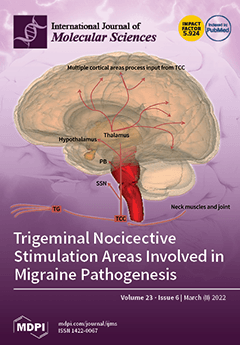Int. J. Mol. Sci., Volume 23, Issue 6 (March-2 2022) – 511 articles
Neurogenic inflammation is one of the factors implicated in the pathogenesis of several neurological diseases, such as migraine. The nociceptive innervation of the intracranial vascular system and meninges consists of unmyelinated (C fibers) and thinly myelinated (Ad fibers) axons containing vasoactive peptides, such as calcitonin gene-related peptide (CGRP), substance P, and neurokinin A. Nociceptive transmission originates from the trigeminal ganglion to the brain stem and subsequently second-order sensitive neurons, including the trigeminal spinal nucleus. In turn, third-order neurons in the thalamus are activated, and nociception reaches the somatosensory cortex as well as other cortical areas. Almost all cranial tissues, including the intracranial and extracranial structures of the head and face, are innervated by trigeminal afferents. View this paper
- Issues are regarded as officially published after their release is announced to the table of contents alert mailing list.
- You may sign up for e-mail alerts to receive table of contents of newly released issues.
- PDF is the official format for papers published in both, html and pdf forms. To view the papers in pdf format, click on the "PDF Full-text" link, and use the free Adobe Reader to open them.






